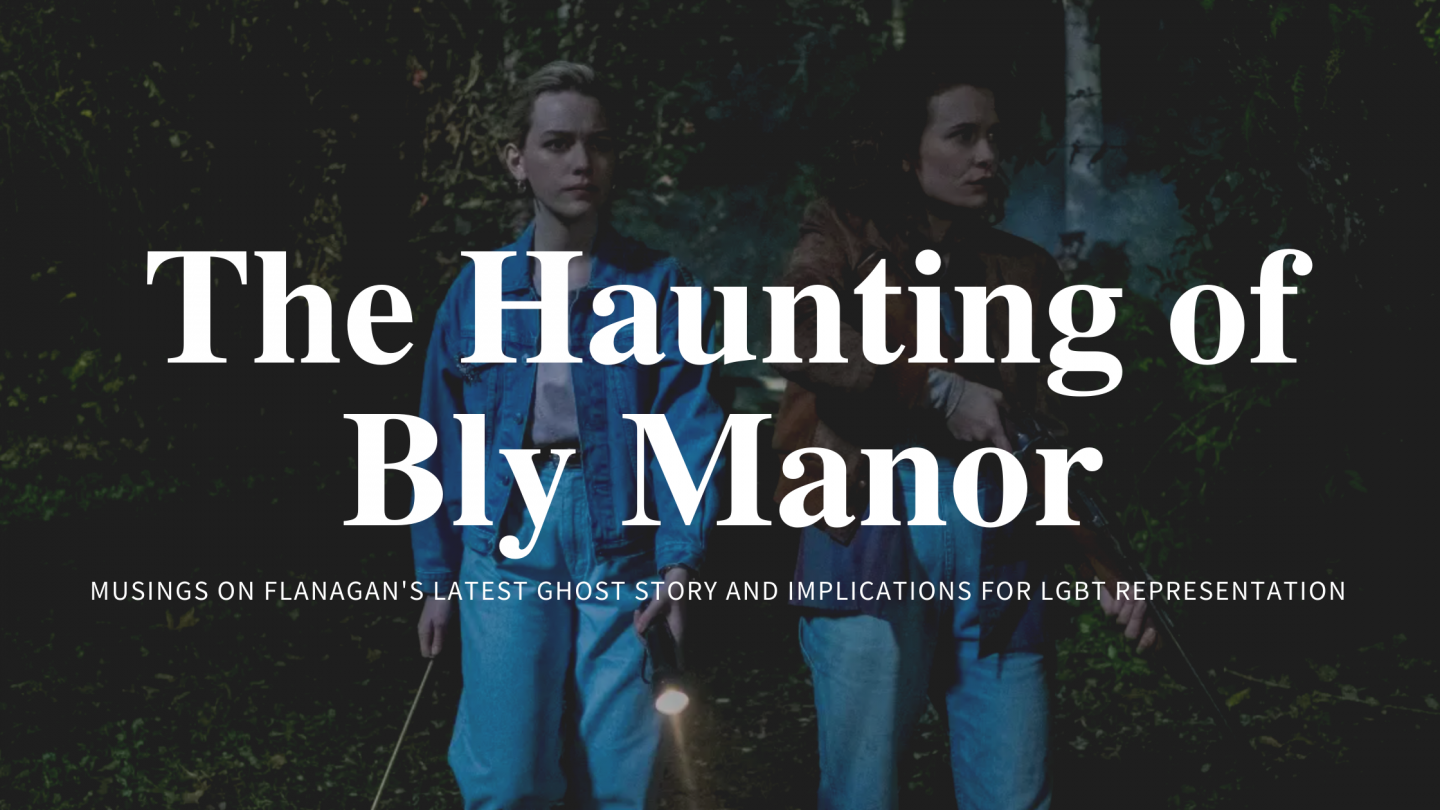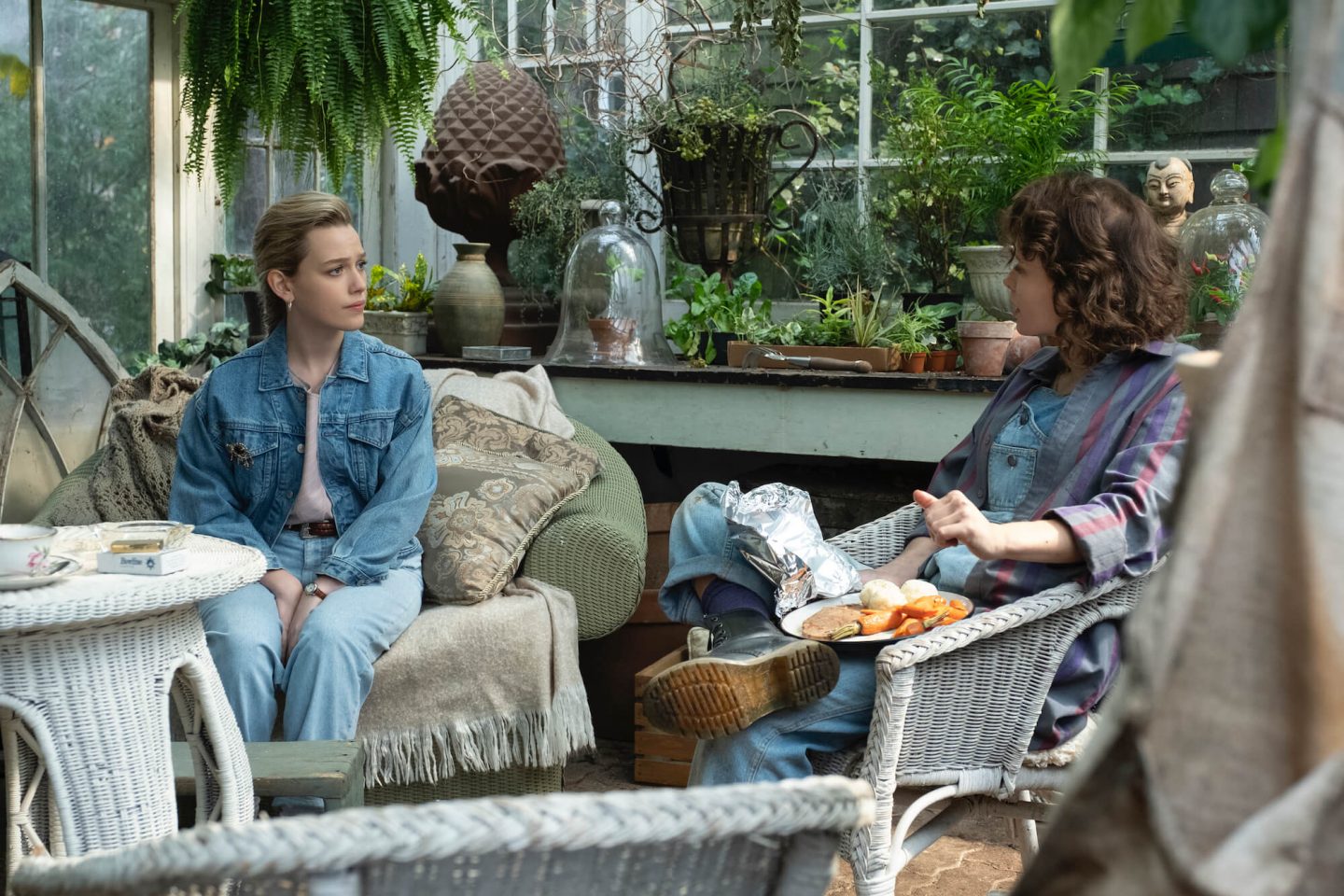
It was with reserved enthusiasm and a slight pinch of scepticism that I found myself settling in to start Mike Flanagan’s latest horror series, The Haunting of Bly Manor. Based on Henry James’ 1898 seminal work, The Turn of the Screw, the series takes place primarily in Bly Manor: a quintessential haunted house, complete with two saccharine and slightly unhinged orphans, and hidden ghouls cloaked in shadows and cleverly crafted cinematographic angles.
It was only when I found myself silently sobbing at the heart wrenching final scenes that I began to accept that perhaps this was a deeply impactful slice of television after all. Although not quite as scary as its predecessor, The Haunting of Hill House, Bly Manor delivers a powerfully emotional punch to the gut. It is, after all, a self-proclaimed love story that happens to feature ghosts, rather than the other way around. There’s also something to be said for the beautiful delivery of the LGBT+ protagonists’ narrative, which I will explore later.
“We can’t count on the past. We think we have it trapped in our memories, but memories fade and they’re wrong. Any of us could die at any moment, or we could forget our entire lives, which is kind of like dying.“
Hannah Grose, The Haunting of Bly Manor
The Haunting of Bly Manor works well as a psychological horror – think fewer jump scares, and more of a persistent sense of impending doom. It seems to encapsulate that hair-raising, pit of your stomach discomfort that arises from a sense of being followed at night down dark back alleys. The central protagonist, Dani Clayton (Victoria Pedretti) is a young Californian teacher with a dark secret following her every move. She is hired by Lord Henry Wingrave (Henry Thomas), uncle to orphans Flora (Amelie Bea Smith) and Miles (Benjamin Evan Ainsworth), as a governess at their ancestral home, Bly Manor. Their last governess died – reported suicide – yet this does little to deter sprightly Dani from launching headfirst into this, rather stereotypical, setup.
If the ominous piano soundtrack and dark, murky tones weren’t enough to slowly build anticipation, the scattering of supernatural figures throughout the creaky house is sure to get the most perceptive viewers hearts racing. The initial lack of explanation and ambiguity surrounding these hidden ghouls creates a gentle crescendo of mounting tension, only to get worse as time unravels more of the heart-breaking backstory to this doomed manor. Flanagan adopts an almost kaleidoscopic mode of storytelling, using an unexpected non-linear chronology in episode 5 to reveal one of the show’s biggest twists.
“When we fall in love, [it’s] kind of giving birth to a new ghost, something that is going to follow us for the rest of our lives.”
Flanagan in an interview with Entertainment Weekly:
For me, the thing that elevates The Haunting of Bly Manor and causes it to transcend traditional gothic storytelling is the careful weaving of narratives that ultimately paints the show as a love story that just happens to feature ghosts. The crux of the show’s message, and the undertone to all of the backstories and subplots, is an exploration of human connection and how this intertwines with feelings of fear and horror.
Flanagan said, in an interview with Entertainment Weekly: “When we fall in love, [it’s] kind of giving birth to a new ghost, something that is going to follow us for the rest of our lives.” We can see, in Bly Manor, this enmeshment of love and supernatural counterparts – every hidden ghost has their own complex history, and all characters are at some point motivated by the driving force of love. Candice Frederick ponders on this theme, and states: “That is, after all, what love comes down to: hope. And it’s that suspension of doubt, even within frightening and seemingly unimaginable horror stories, that ultimately steals our hearts. Because it’s not specters or cadavers, or even boundless technology, we fear most; it’s that our greatest love has been here the whole time, and we can’t see them. Or that time and circumstance has already taken them away.”

I can’t review this show without mentioning the central love story – namely, the one of Dani and the gardener Jamie (Amelia Eve). As well as being beautifully portrayed and acted, I am really impressed with the depiction of LGBT characters and think that other directors need to take note for future reference.
Admittedly, LGBT+ representation on popular media and in television and film is not a novel concept. According to this Bloomberg report, among scripted characters on prime-time TV shows at the end of 2019, more than 10% were LGBT—and a majority of those were women or people of colour. Now, if we factor in that between 4% – 12.5% of Americans today identify as LGBT+ then this seems like a fairly reasonable representation. But as someone who grew up romanticising an archetypal heterosexual Hollywood romance, I am a big advocate for more representation of LGBT+ people in all forms.
“One day at a time is what we’ve got. It’s what everybody’s got if you get down to it.“
Jamie, Haunting of Bly Manor
Most of my favourite lesbian characters are either presented in such a way that centralises their sexuality and makes it the only defining characteristic of their identity, or they are subject to the notorious fate of lesbian TV death. A lot of lesbians die on TV. Or have some equally horrible fate, that prevents them from living out their best lesbian lives, moving in with their girlfriends way too soon and filling their U-hauled houses with cats and plants. I am obviously being facetious, but the point remains.
The Haunting of Bly Manor acknowledges the historic struggle that queer people have faced and continue to face today in many parts of the world. Dani’s engagement to her male best friend was done out of a desperation to avoid revealing the truth of her sexuality to friends and family, in a time where such revelation would have been condemned. But her subsequent relationship with Jamie is beautifully understated. The fact that the role was filled in by a female actor last minute supports the notion that gender is not a central focus in their romantic connection.
I think The Haunting of Bly Manor will stay with me for a long time, for reasons stated above. It’s not the creepy ghosts or startling jump scares that are burned into my mind, but instead the crafty intertwining of love stories and ghost stories that is encapsulated in the final shot of the series. The placement of Dani’s hand on Jamie’s shoulder, an ambiguous yet memorable shot, serves to represent the series’ central theme. It serves as a bittersweet reminder that ghosts are motivated by love and loss – a desperation to believe that the ones we love the most never truly leave us. Ghosts are manifestations of our own desires, a way to remain trapped in a limbo of memories past – personal, often painful hauntings of our own making, yet also bringing us comfort when we need it most.
“Ghosts are manifestations of our own desires, a way to remain trapped in a limbo of memories past – personal, often painful hauntings of our own making, yet also bringing us comfort when we need it most.”
Stop breaking my heart please the show already did that
Author
Sorry, I can’t see your comment through my tears xx